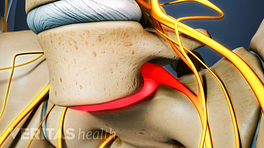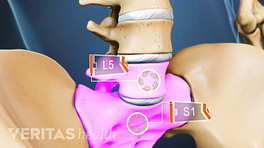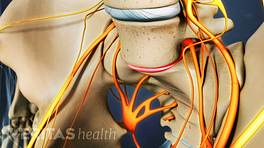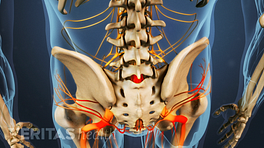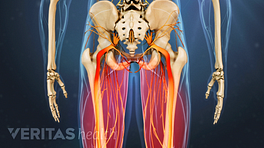Lumbar spondylolysis is a condition in the lower back where there is a defect or fracture in the part of the vertebra known as the pars interarticularis. The pars interarticularis, also known as the isthmus, is a segment of bone that connects the facet joints at the back of the spine. It is a small, thin part of the lamina that has a poor blood supply, which makes it susceptible to stress fractures.
Fractures of the pars interarticularis, known as spondylolysis, usually occur at the L5-S1 level,and rarely at L4-L5 or higher. They can occur on one side of the vertebra or on both.
Spondylolysis usually occurs in children between the ages of 5 and 7. It is sometimes called the “gymnastics fracture” because it is associated with sports that require a lot of bending backward. It is thought that repetitive stress on the spine has a cumulative effect that causes the pars interarticularis to break.
Spondylolysis sometimes causes spondylolisthesis, which is when one vertebra slips forward on the vertebra below it.
Symptoms include a deep ache in the lower back, pain that is worse with movement, and tightness in the hamstrings. If the vertebral slippage is severe, nerve roots can be compressed.
However, most people do not experience symptoms from lumbar spondylolysis at all, and those who do tend to develop problems in adulthood or in adolescence.
In This Article:
- Spondylolysis and Spondylolisthesis
- Symptoms and Diagnosis of Spondylolysis
- Spondylolysis Treatment
- Lumbar Spondylolysis Video

